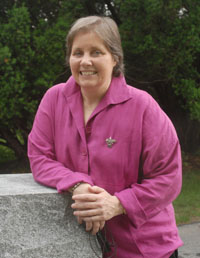Gay-straight alliances help LGBT youth, young adults

Caitlin Ryan
Gay-straight alliance clubs in middle schools and high schools help youth not only while they are in school, but also later in life, according to a new study.
LGBT young adults who attended a school with a GSA had better mental health as young adults, were less likely to drop out of high school, and more likely to attend college, according to researchers Russell B. Toomey, Caitlin Ryan, Rafael M. Diaz, and Stephen T. Russell. Their results were published in the November issue of the peer-reviewed journal Applied Developmental Science.
“This study adds to the mounting evidence that youth-led clubs are important for healthy development—especially for youth at risk,” Russell said in a statement. “For LGBT youth, high school gay-straight alliances make a significant positive difference.”
Although previous studies have shown GSAs to have positive effects on LGBT youth while in school, the current study is the first to look at the impact of GSAs on students as they grow into young adults.
The research is part of Ryan’s Family Acceptance Project at San Francisco State University, a research, intervention, education, and policy initiative that works to decrease health risks for LGBT youth.
The study covered 245 young adults (ages 21-25) in the San Francisco Bay Area who self-identified as LGBT and came from diverse socioeconomic backgrounds. Approximately 47 percent identified as male, 45 percent as female, and 9 percent as transgender. Approximately 70 percent identified as lesbian or gay, 13 percent as bisexual, and 17 percent as other (e.g., queer, dyke, homosexual). About half (51 percent) were Latino and half (49 percent) were white and non-Latino. (Numbers do not add up to exactly 100 percent because of rounding.)
Of the 245 participants, 86 (35 percent) said their schools had a GSA or similar club. Of those, 55 (64 percent) said they participated in the GSA.
But the mere presence of a GSA at the school was more relevant to students’ well-being than their actual participation in it, the study found. The researchers suggest this may be because “schools with GSAs likely have safer school climates overall.”
They also found that participants who perceived their GSAs to be more effective in promoting safe school climates reported lower levels of LGBT-specific school victimization.
Participation in a GSA did seem to buffer the impact of school victimization related to being LGBT. Students who experienced victimization at a low level and participated in a GSA had lower levels of depression as young adults and fewer lifetime suicide attempts.
But students who experienced higher levels of victimization did not enjoy the same protective effect of having a GSA at their school. This, said researchers, suggests that GSAs “cannot be accepted by schools as the only solution for creating safer school climates for LGBT youth,” and GSAs “may not be sufficient to alter the system-level heterosexism and homophobia that continues to exist in schools.”
Based on previous research by themselves and others, the researchers recommend that schools take other steps to protect LGBT students, such as enacting anti-bullying policies that specifically prohibit anti-LGBT bullying, training teachers on how to address with LGBT issues, providing an LGBT-inclusive curriculum, and having LGBT-inclusive and accessible support for students.
“Our findings,” said Toomey, “document that other LGBT-positive supports need to be implemented in schools for LGBT students to thrive.”
The researchers cautioned that the study had a limited sample size and urged future efforts that use larger samples to further explore the associations between GSAs, levels of GSA participation, and outcomes for young adults.
The research adds to the picture developed by previous studies, which have shown the positive effects of GSAs on LGBT high school and middle school students. In the May 2011 issue of Pediatrics, the official journal of the American Academy of Pediatrics, Dr. Mark Hatzenbuehler of Columbia University found a positive social environment, including the presence of GSAs, led to a 20 percent reduction in the risk of attempting suicide for LGBT youth.
And according to the Gay, Lesbian, and Straight Education Network’s (GLSEN’s) 2009 National School Climate Survey, LGBT students in schools with GSAs heard fewer homophobic remarks, were more likely to report that educators intervened when they heard such remarks, experienced less victimization related to their sexual orientation and gender expression, and were less likely to feel unsafe. They also felt a greater sense of connectedness to their school community.
There are over 4,000 GSAs in the country, according to GLSEN, and nearly 45 percent of LGBT students attend a school that has one.
U.S. Secretary of Education Arne Duncan cited the GLSEN survey in a “Dear Colleague” letter to educators this past June, in which he reminded them that based on the Equal Access Act of 1984, schools receiving federal funds must provide equal access to school resources for all student groups, including GSAs.
Many schools still try to prohibit GSAs. In recent years, Okeechobee and Yulee high schools in Florida, Flour Bluff High School in Corpus Christi, Texas, and West Bend High School in Milwaukee, Wisconsin, have attempted to bar GSAs.
Federal lawsuits were brought against the schools in Florida and Wisconsin, and the ACLU sent a notice letter to the school in Texas, reminding them of their legal obligation to allow the groups. In all of the cases, the parties settled out of court or judges ruled in favor of allowing the GSA.


Leave a Reply